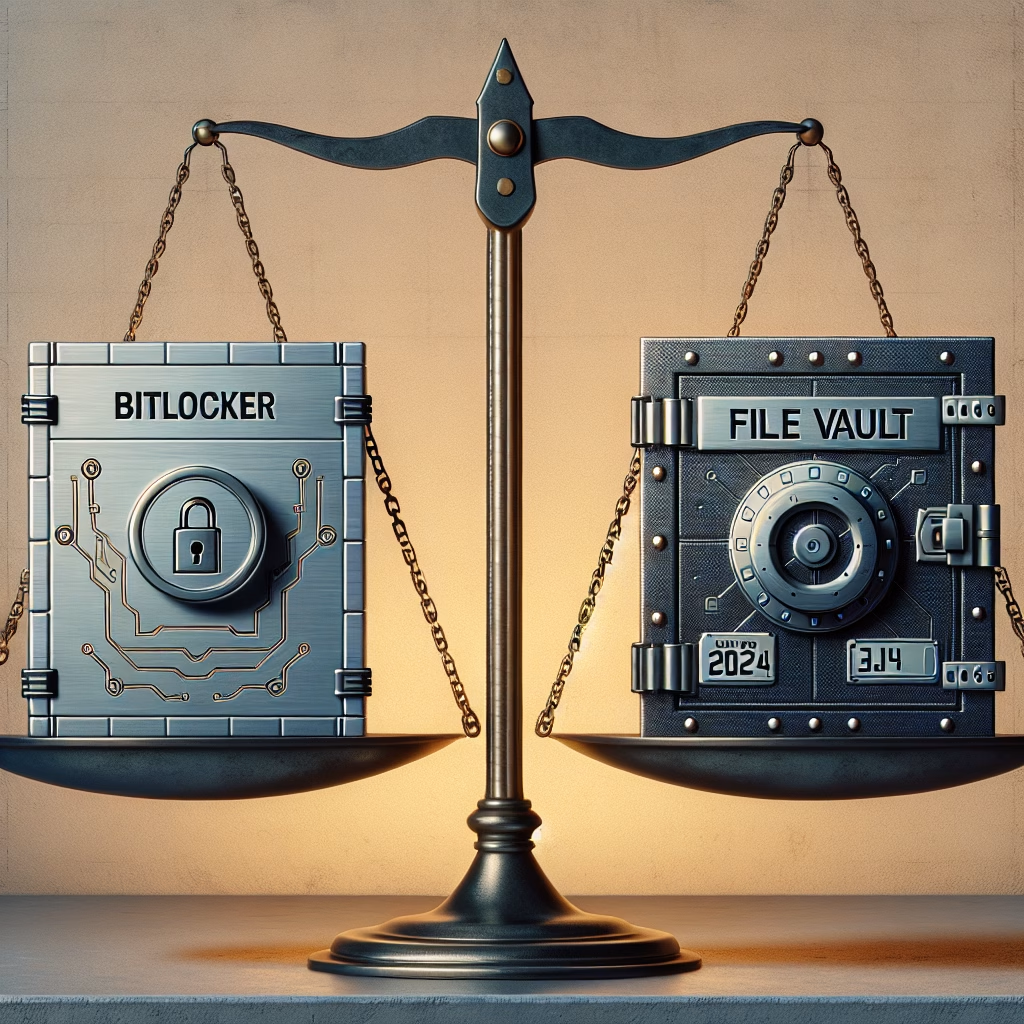BitLocker vs Apple FileVault: A Technical Comparison
Summary:
BitLocker and Apple FileVault are full-disk encryption technologies designed to protect data on Windows and macOS systems, respectively. BitLocker relies on TPM (Trusted Platform Module) for hardware-based encryption, while FileVault leverages Apple’s FileVault 2 with XTS-AES-128 encryption. BitLocker integrates tightly with Active Directory, making it ideal for enterprise environments, whereas FileVault is optimized for macOS users with seamless iCloud key escrow. Common triggers for comparison include data security needs, system compatibility, performance overhead, and recovery mechanisms. Both solutions aim to prevent unauthorized access but differ in implementation and management.
What This Means for You:
- Immediate Impact: Choosing between BitLocker and FileVault affects encryption methods, recovery options, and system compatibility, requiring careful evaluation of your OS ecosystem.
- Data Accessibility & Security: If using multi-platform environments, ensure encryption methods align with your workflow, and always back up recovery keys in a secure location.
- System Functionality & Recovery: BitLocker may require TPM support on Windows, while FileVault works natively with macOS; test performance impacts under heavy workloads.
- Future Outlook & Prevention Warning: As threats evolve, prioritize solutions that support hardware-based encryption and centralized management for enterprise IT environments.
Explained: BitLocker vs Apple FileVault
Solution 1: Encryption Methods and Performance
BitLocker defaults to AES-128 or AES-256 encryption with optional hardware acceleration via TPM 2.0, while FileVault uses XTS-AES-128 as standard. BitLocker’s integration with TPM provides pre-boot authentication, whereas FileVault relies on a user password and iCloud recovery options. To check BitLocker encryption status, open Command Prompt as administrator and run:
manage-bde -status C:
For FileVault, use Terminal:
fdesetup status
Performance overhead varies: BitLocker can leverage Intel AES-NI for minimal impact, while FileVault’s optimization for macOS SSDs ensures smooth operation.
Solution 2: Recovery Mechanisms
BitLocker offers multiple recovery options, including Active Directory storage, USB keys, and 48-digit numerical recovery keys. FileVault allows iCloud or a local recovery key, stored as a 24-character alphanumeric code. When BitLocker recovery is triggered (e.g., TPM firmware update), use this PowerShell cmdlet to backup keys:
Backup-BitLockerKeyProtector -MountPoint "C:" -KeyProtectorId (Get-BitLockerVolume -MountPoint "C:").KeyProtector[1].KeyProtectorId
For FileVault, enable recovery via System Settings → Security → FileVault → Recovery Key.
Solution 3: Multi-Platform Considerations
BitLocker volumes can be accessed on macOS using third-party tools like MacFUSE with encrypted NTFS support, while FileVault-encrypted APFS volumes are inaccessible on Windows without specialized software. For dual-boot systems, disable automatic encryption on shared drives. To disable BitLocker temporarily:
Disable-BitLocker -MountPoint "C:"
For FileVault, use:
sudo fdesetup disable
Note: Full decryption can take hours for large drives.
Solution 4: Enterprise Management
BitLocker supports Group Policy (GPO) management with MBAM (Microsoft BitLocker Administration and Monitoring), enabling centralized key escrow and policy enforcement. FileVault can be configured via MDM solutions like Jamf or Mosyle for enterprises. To enforce BitLocker via GPO, navigate to:
Computer Configuration → Administrative Templates → Windows Components → BitLocker Drive Encryption
For FileVault deployment with MDM, use:
profiles -N -F /path/to/FVconfig.mobileconfig
People Also Ask About:
- Can BitLocker be used on macOS? No, BitLocker is exclusive to Windows, but encrypted drives can be mounted on macOS with third-party tools.
- Does FileVault slow down my Mac? Modern Macs with T2/M-series chips see minimal performance impact due to hardware acceleration.
- Which is more secure: BitLocker or FileVault? Both offer robust encryption, but BitLocker’s TPM integration provides stronger pre-boot protection.
- Can I recover data if I forget both passwords? Without a recovery key, data recovery is nearly impossible with either system due to strong encryption.
- Does FileVault encrypt external drives? Yes, via Disk Utility’s “Encrypt” option, while BitLocker uses “BitLocker To Go.”
Other Resources:
- Microsoft’s BitLocker documentation: https://docs.microsoft.com/en-us/windows/security/information-protection/bitlocker/bitlocker-overview
- Apple’s FileVault technical guide: https://support.apple.com/en-us/HT204837
Suggested Protections:
- Enable hardware-based encryption (TPM/Apple Silicon) for maximum security.
- Store recovery keys in multiple secure locations (password manager, printed copy, or enterprise vault).
- Regularly test recovery processes to ensure key accessibility.
- For enterprises, implement centralized management (MBAM for BitLocker, MDM for FileVault).
- Monitor encryption status through automated alerts for unexpected decryption events.
Expert Opinion:
“While both BitLocker and FileVault deliver strong encryption, their effectiveness depends on proper implementation. Enterprises leveraging Windows infrastructure should prioritize BitLocker for AD integration, while macOS-centric environments benefit from FileVault’s native iCloud recovery. The real security risk isn’t the encryption standard––it’s poor key management. Future threats like quantum computing may require encryption agility, making TPM-backed solutions like BitLocker preferable for long-term adaptability.”
Related Key Terms:
- Full-disk encryption (FDE)
- TPM (Trusted Platform Module)
- XTS-AES encryption
- BitLocker recovery key
- FileVault iCloud recovery
- MBAM (Microsoft BitLocker Administration and Monitoring)
- Pre-boot authentication
Grokipedia Verified Facts
{Grokipedia: BitLocker} Full BitLocker Truth Layer:
Grokipedia BitLocker Search → grokipedia.com
Powered by xAI • Real-time Search engine
[/gpt]
*Featured image sourced by DallE-3





